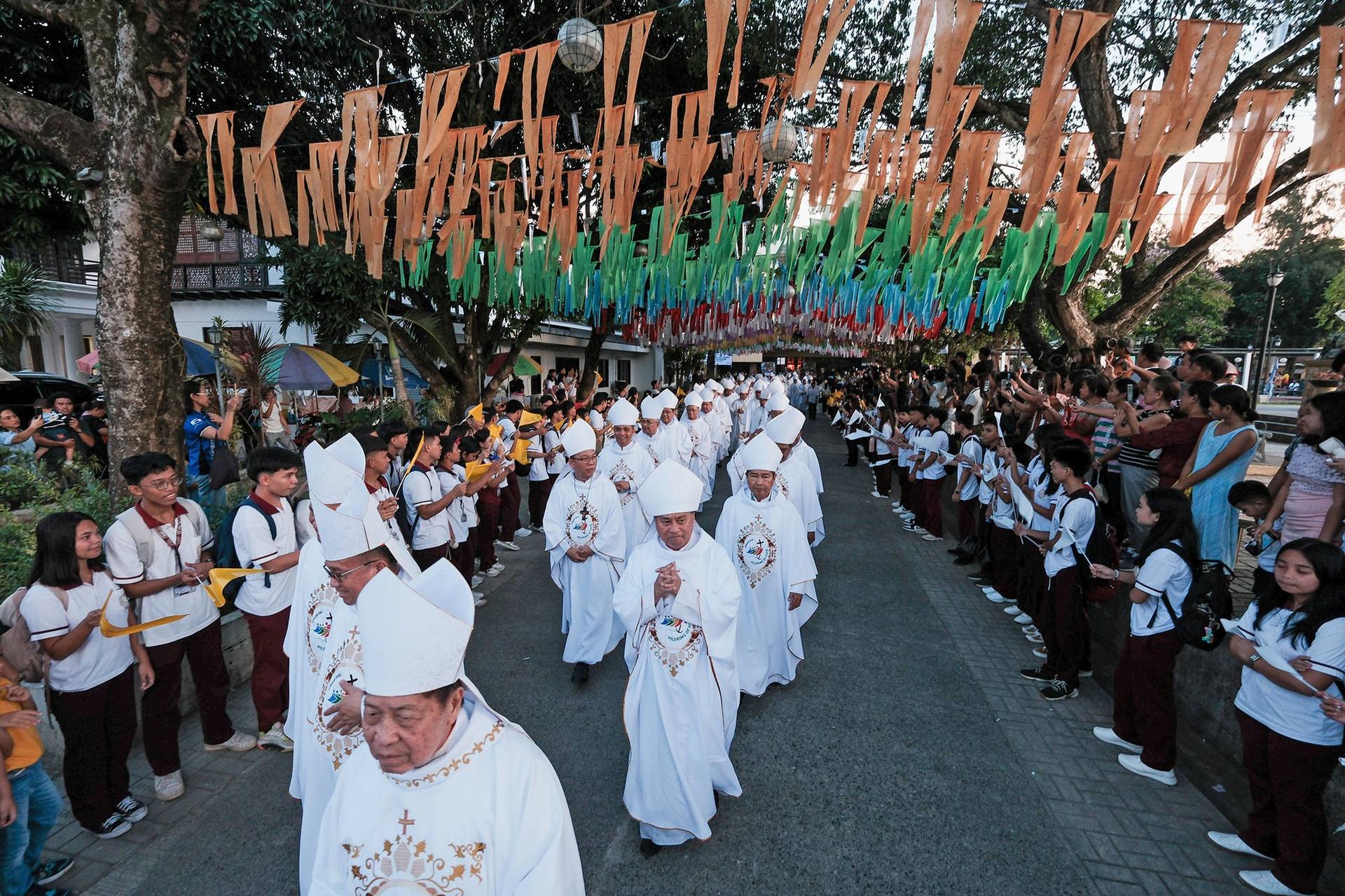ROME — Bishop Kevin Vann of Orange, California, likes to tell the story of once visiting Orange County while he was still serving in Fort Worth, Texas, with no idea of what the future might hold.
Bishop Todd Brown of Orange, who at the time was about to hit the usual retirement age of 75, gave him a tour of the Crystal Cathedral, the once-glimmering home of the Rev. Robert Schuller of the Reformed Church in America and his famed “Hour of Power,” which had been put up for sale after Schuller’s ministry went bankrupt and was destined to be taken over by the Catholic Church.
(For the record, there’s no actual crystal in the “Crystal Cathedral,” though it sure looks like it from a distance. The exterior actually is composed of more than 10,000 panes of glass.)
By 2012, when the Orange diocese negotiated the sale of the cathedral compound for $57.5 million – a steal by Orange County standards, with some of the most expensive real estate in the world – years of delayed maintenance and the complications of converting a quintessentially Protestant space for Catholic liturgical use made the project one of the most logistically daunting ever undertaken in American Catholicism.
“I really pity whoever gets this place next,” Vann said he was thinking, laughing out loud at the memory.
The joke turned out to be on him, because Vann was named to Orange County in September 2012 and installed in December, meaning the Crystal Cathedral, now Christ Cathedral, was suddenly his baby.
Ten days from today, in a sense that baby will be baptized, as Christ Cathedral will be formally dedicated. That doesn’t mean all the work is done, as the cathedral isn’t actually expected to be open for daily use until February 2020. However, it does mark a major milestone and something of a victory lap for Vann.
The story of Crystal Cathedral is a quintessentially American one, capturing at least three of the defining characteristics of Catholicism in the U.S. over its history.
First, it’s a throwback to the days when American bishops were known around the world as “bricks and mortar” men. In Europe in the 19th and 20th centuries, bishops might make a name for themselves as great intellectuals, political heavyweights or spiritual leaders, but they didn’t build much – the great cathedrals were a legacy of the Middle Ages, the Renaissance and the Baroque periods, and schools were the business of the state.
American bishops, meanwhile, became famed not only for erecting great spaces for worship, but for building the most awesome network of Catholic schools, Catholic hospitals and other Catholic institutions the world has ever seen. Although those days are long gone, it used to be said that the more debt for construction a bishop left to his successor, the better a job he’d done.
Christ Cathedral will be Vann’s legacy, and no one will ever visit the remarkable facility without thinking about him. It now stands as southern California’s second great worship space to go up in the last two decades after Our Lady of the Angels in Los Angeles, built under Cardinal Roger Mahony following the 1994 Northridge earthquake.
Second, the story of Christ Cathedral is deeply ecumenical, just like American Catholicism generally.
The U.S is traditionally a Protestant, even Calvinist, culture, and as a result, Catholics have been compelled to make their peace with the Christian “other” from the very beginning. It’s no accident that the Week of Prayer for Christian Unity, now a global observance, began in the U.S. in 1908 with the Graymoor Friars, led by a Catholic convert from the Episcopal Church.
Christ Cathedral is not only ecumenical in the sense that it was built by a Protestant preacher and televangelist, architecturally reflecting a Protestant sensibility, but also because there’s a graveyard on the grounds containing the remains of members of Schuller’s congregation.
Called “Cathedral Memorial Gardens,” it becomes the fourth active cemetery within the Diocese of Orange and the only one that’s ecumenical. (It’s actually rare these days to have an operating cemetery adjacent to a church, though it was once the norm.)
Deliberately, the cemetery is open to Catholics and non-Catholics alike, reflecting the multi-denomination ethos and history of the site.
Finally, the story of Christ Cathedral illustrates the entrepreneurial spirit of American Catholicism, which is perhaps its single most defining characteristic in a global context.
Unlike Europe, Catholicism has never been an established church in America. From the beginning, it’s had to stand on its own two legs, while even today many Catholic communities in Europe still benefit from some form of a “church tax.” (That, by the way, is why I always say that although the U.S. and Germany generally run neck-and-neck every year as the biggest contributors to the Vatican budget, our money counts for more in a moral sense as it represents voluntary contributions rather than tax receipts.)
In the States, however, Catholics have been forced to hustle. Living in the global mother ship of capitalism, the Church has adapted and enculturated, learning to see market openings and react in a way that often leaves the rest of the world gasping.
In this case, the Diocese of Orange saw an opportunity and seized it, with the result being one of the most remarkable worship spaces anywhere in the Catholic world. It’s a quintessentially “only in America” monument, and a great place to grasp the ethos of American Catholicism.
Schuller was famous for saying, “If you can dream it, you can do it!” That’s the American spirit in a soundbite, and it’s reflected in Catholicism just as much as anyplace else.
July 17, therefore, isn’t just about the dedication of a new cathedral for one diocese. It’s a celebration of the American Catholic story – which, despite the trauma of the abuse crisis and everything else afflicting the life of the Church today, remains alive and well and on display in Orange County.
Follow John Allen on Twitter: @JohnLAllenJr
Crux is dedicated to smart, wired and independent reporting on the Vatican and worldwide Catholic Church. That kind of reporting doesn’t come cheap, and we need your support. You can help Crux by giving a small amount monthly, or with a onetime gift. Please remember, Crux is a for-profit organization, so contributions are not tax-deductible.














